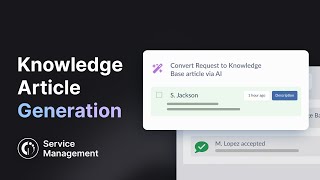AI Digest: Transforming Repetitive Documents Into Informative Podcasts

Table of Contents
The Power of AI in Document Summarization
AI is no longer a futuristic concept; it's a powerful tool reshaping how we interact with information. AI Digests leverage this power to significantly improve document processing and understanding.
Automated Transcription and Analysis
The first step in creating an AI Digest is automated transcription and analysis. Sophisticated AI tools can accurately transcribe documents of various formats, from PDFs and Word files to even handwritten notes (with varying degrees of accuracy depending on handwriting quality). Beyond simple transcription, these tools utilize Natural Language Processing (NLP) to understand the context and meaning within the text. This allows for a deeper level of analysis, identifying key themes, arguments, and supporting evidence.
- Automated Efficiency: This automated process drastically reduces the time and effort required for manual summarization, freeing up valuable hours.
- NLP Power: NLP algorithms decipher the nuances of human language, understanding the relationships between sentences, paragraphs, and overall document structure.
- Leading Tools: Several excellent tools are available for this task, including Otter.ai, Descript, and Trint. These offer varying levels of functionality and integration with other AI tools.
Identifying Key Information and Filtering Noise
Once the document is transcribed, the AI’s work continues. Advanced algorithms filter out irrelevant information, focusing on the core message and key takeaways. This is crucial for creating a concise and informative podcast, avoiding unnecessary details that could bore or confuse the listener.
- Keyword Extraction: The AI identifies keywords and phrases that best represent the document's central themes.
- Topic Modeling: Sophisticated topic modeling techniques cluster related information, further refining the summary.
- Cognitive Load Reduction: This process significantly reduces the cognitive load on the listener, providing a clear and streamlined narrative.
Creating Engaging Podcast Content from AI Summaries
The AI-generated summary is the foundation, but creating a truly engaging podcast requires additional steps.
Converting Text to Speech (TTS)
High-quality Text-to-Speech (TTS) engines are key to bringing the AI summary to life. Modern TTS technology produces remarkably natural-sounding audio, capable of conveying emotion and inflection, making the listening experience significantly more enjoyable.
- Voice Selection: Choose a voice that suits the document's tone and intended audience. Consider whether a formal or informal tone is appropriate.
- TTS Providers: Many reputable providers offer robust TTS services, including Amazon Polly, Google Cloud Text-to-Speech, and Microsoft Azure Text-to-Speech. Each offers unique voice options and features.
Adding Audio Enhancements and Music
While the AI-generated content provides the core information, adding audio enhancements significantly improves the listener experience.
- Background Music: Subtle background music can enhance the mood and focus.
- Sound Effects: Carefully chosen sound effects can emphasize key points or add creative flair.
- Professional Editing: Professional audio editing and mastering techniques ensure high-quality audio production. This includes noise reduction, equalization, and compression.
- Royalty-Free Resources: Utilize royalty-free music and sound effects to avoid copyright issues.
Structuring the Podcast for Optimal Listenability
Simply converting text to speech isn't enough. Structure is paramount for an engaging podcast.
- Segmenting the Summary: Break down the AI-generated summary into logical, manageable segments.
- Clear Transitions: Use clear and concise transitions between segments to improve flow and coherence.
- Introduction and Conclusion: Add a brief introduction setting the context and a concise conclusion summarizing key points. This provides a satisfying listening experience.
Benefits of Using AI Digests
The advantages of transforming documents into AI Digests are numerous.
Time Savings
Quickly digest large volumes of information without the need for extensive reading. This is particularly beneficial for professionals dealing with a constant influx of documents.
Improved Comprehension
The audio format allows for easier processing and retention of information. Many find listening to be a more passive and less strenuous way to consume information compared to reading.
Increased Accessibility
Podcasts are accessible to a wider audience, including individuals who may find reading challenging or prefer auditory learning.
Enhanced Productivity
Free up time to focus on other critical tasks by significantly reducing the time spent reading and processing documents.
Conclusion
AI Digests offer a powerful solution for transforming repetitive documents into informative and engaging podcasts. By leveraging AI for automated summarization and high-quality audio production, you can significantly improve information consumption and boost your productivity. Stop struggling with lengthy documents – embrace the power of AI Digests and transform your workflow today! Start exploring the possibilities of creating your own AI Digests now and experience the benefits of efficient information processing.

Featured Posts
-
 Damens Nieuwste Combat Support Schip Een Mijlpaal Voor De Nederlandse Marine
Apr 26, 2025
Damens Nieuwste Combat Support Schip Een Mijlpaal Voor De Nederlandse Marine
Apr 26, 2025 -
 Neighbours 38 Years Later A Murder Rocks Ramsay Street
Apr 26, 2025
Neighbours 38 Years Later A Murder Rocks Ramsay Street
Apr 26, 2025 -
 Todays Nyt Spelling Bee Hints Answers And Help For February 3rd Puzzle 337
Apr 26, 2025
Todays Nyt Spelling Bee Hints Answers And Help For February 3rd Puzzle 337
Apr 26, 2025 -
 Tariff War Leading Philippine Bank Ceo Sounds Alarm
Apr 26, 2025
Tariff War Leading Philippine Bank Ceo Sounds Alarm
Apr 26, 2025 -
 Open Ai Facing Ftc Investigation Understanding The Regulatory Landscape For Ai
Apr 26, 2025
Open Ai Facing Ftc Investigation Understanding The Regulatory Landscape For Ai
Apr 26, 2025
